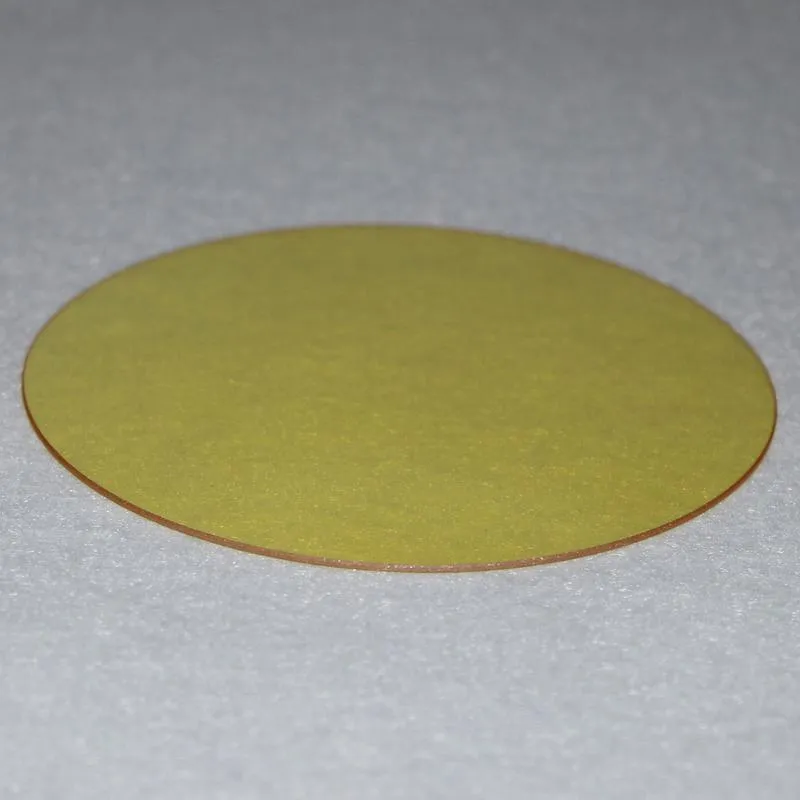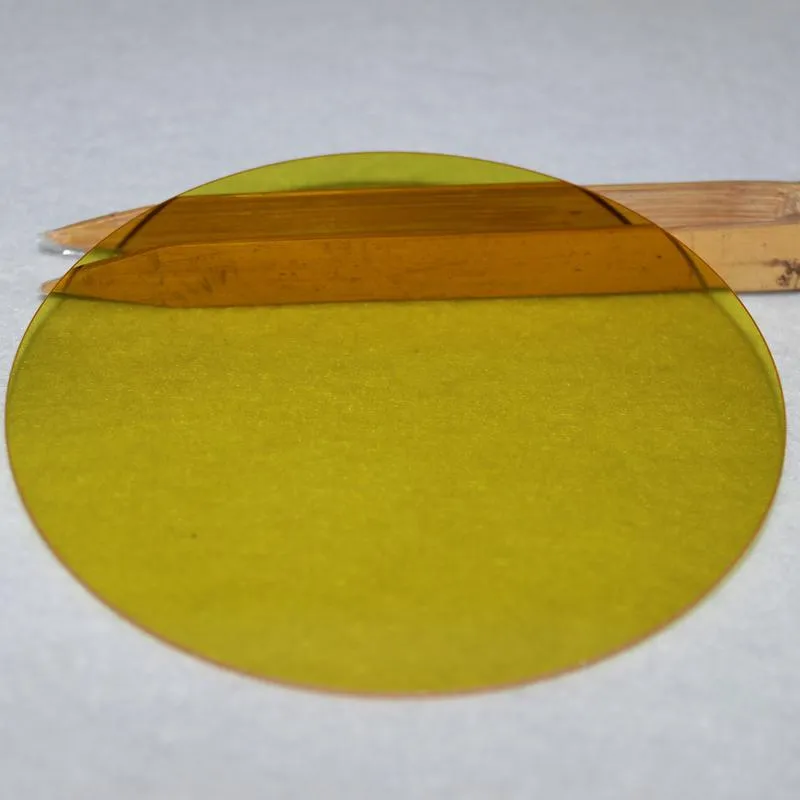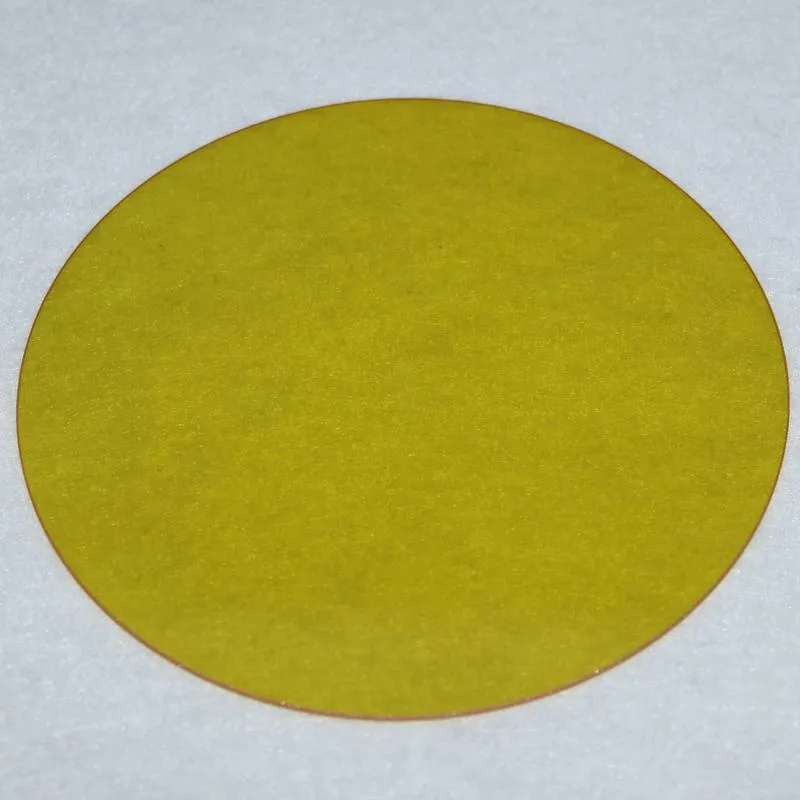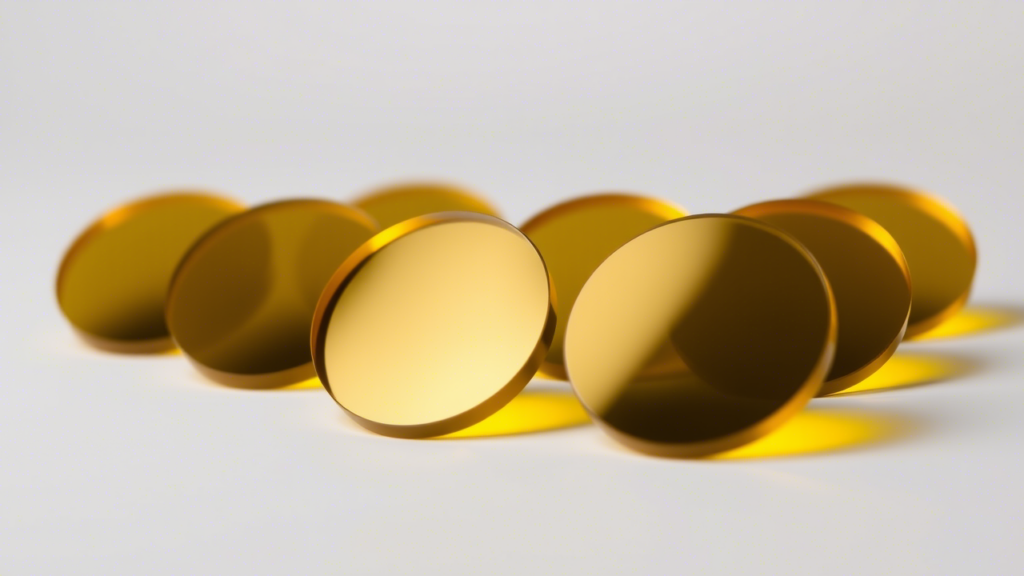Diameter 25mm Zinc Selenide (ZnSe) Lens
Melting Point: 1525°C (dissociates about 700°C)
Thermal Conductivity: 18 W/(m K) at 298K
Thermal Expansion: 7.1 x 10-6/°C at 273K
Hardness Knoop: 120 with 50g indenter
Size: 3mm-200mm
Thickness: 0.50mm-30mm
Tolerance: +/-0.05mm
Zinc Selenide (ZnSe) Optical Components
Zinc Selenide (ZnSe) optical components are specifically designed for infrared (IR) spectroscopy applications. These components, including ZnSe lenses and windows, are widely used in thermal imaging, FLIR (Forward-Looking Infrared), and CO2 laser systems. ZnSe is highly valued for its low absorption coefficient, excellent thermal shock resistance, and ability to transmit light across a broad spectral range. However, due to its relatively soft nature and sensitivity to harsh environments, it is not recommended for use in extreme conditions.
What Are Zinc Selenide (ZnSe) Components?
Zinc Selenide (ZnSe) optical components are specialized materials designed for infrared (IR) applications. They are commonly used in thermal imaging, FLIR systems, and CO2 laser integration. ZnSe’s unique properties, such as low IR absorption and high thermal shock resistance, make it an ideal choice for these applications. However, because of its softness and susceptibility to damage, it is not suitable for harsh or abrasive environments.
Applications of ZnSe Components
Ideal for Thermal Imaging
Zinc Selenide has minimal infrared absorption and can transmit light across a wide spectral range (0.6–16 µm). This characteristic makes it particularly effective for thermal imaging, where the black body radiation spectrum of distant objects is analyzed. Long-wave transmission is essential for imaging objects at room temperature, which typically emit maximum radiation at approximately 10 µm with low intensity.
Heat Resistance
ZnSe windows are well-suited for high-temperature environments due to their low absorption and excellent thermal shock resistance. These properties make them ideal for high-power CO2 laser applications. Additionally, they are commonly used in infrared imaging for scientific research, military operations, search-and-rescue missions, and other demanding applications.
Handling and Maintenance of ZnSe Components
Softness of Zinc Selenide Material
Zinc Selenide is a relatively soft material, requiring careful handling to avoid damage. When working with ZnSe windows or lenses:
- Always handle the component by its edges to prevent warping.
- Apply uniform pressure during installation or use.
- Avoid touching the optical surface directly to prevent scratches.
Cleaning Tips
- Use a dust-free blower or air bulb to remove loose particles like dust or lint.
- For more thorough cleaning, use acetone or isopropanol with surgical-quality cotton balls.
- While holding the edge of the component, gently wipe the surface with a damp cotton ball. Avoid rubbing or applying excessive pressure.
Safety Precautions
Zinc Selenide is toxic, so protective rubber gloves should always be worn when handling ZnSe components.
Product Range
The image above shows a 25mm ZnSe window, commonly used in temperature measurement systems. VY offers a comprehensive range of ZnSe optical components, including:
- ZnSe lenses
- ZnSe windows
- ZnSe prisms
- ZnSe plate beamsplitters
- ZnSe focusing objectives
We welcome custom designs and drawings to meet your specific requirements.
Why Choose ZnSe Components?
ZnSe optical components combine exceptional performance with versatility, making them indispensable in advanced applications like thermal imaging, CO2 laser systems, and infrared spectroscopy. Their ability to transmit light efficiently across a wide spectral range ensures accurate and reliable results in even the most demanding environments.
Contact us for inquiries or custom orders!
Final Note
When selecting optical components for your application, consider the unique properties of Zinc Selenide. Its low absorption, high thermal resistance, and wide spectral transmission make it an excellent choice for infrared technologies—provided it is handled with care and used in appropriate environments.
Boxed Answer:
Zinc Selenide (ZnSe) optical components are specialized materials designed for infrared applications, offering low absorption, high thermal resistance, and wide spectral transmission, making them ideal for thermal imaging, CO2 lasers, and FLIR systems but requiring careful handling due to their softness and toxicity.
Our Ordering Process
Send us your request with detailed specifications
Receive a commercial offer with terms and costs
After your approval, we handle manufacturing, quality control, and shipping
📦 Shipping
3-5 days in EU, from 10 days to USA
💳 Payment methods
Cash, Bank Transfer, Cards (Visa, Mastercard, Amex, Discover) and PayPal
💬 Questions?
Contact us via WhatsApp, phone, live chat or email




